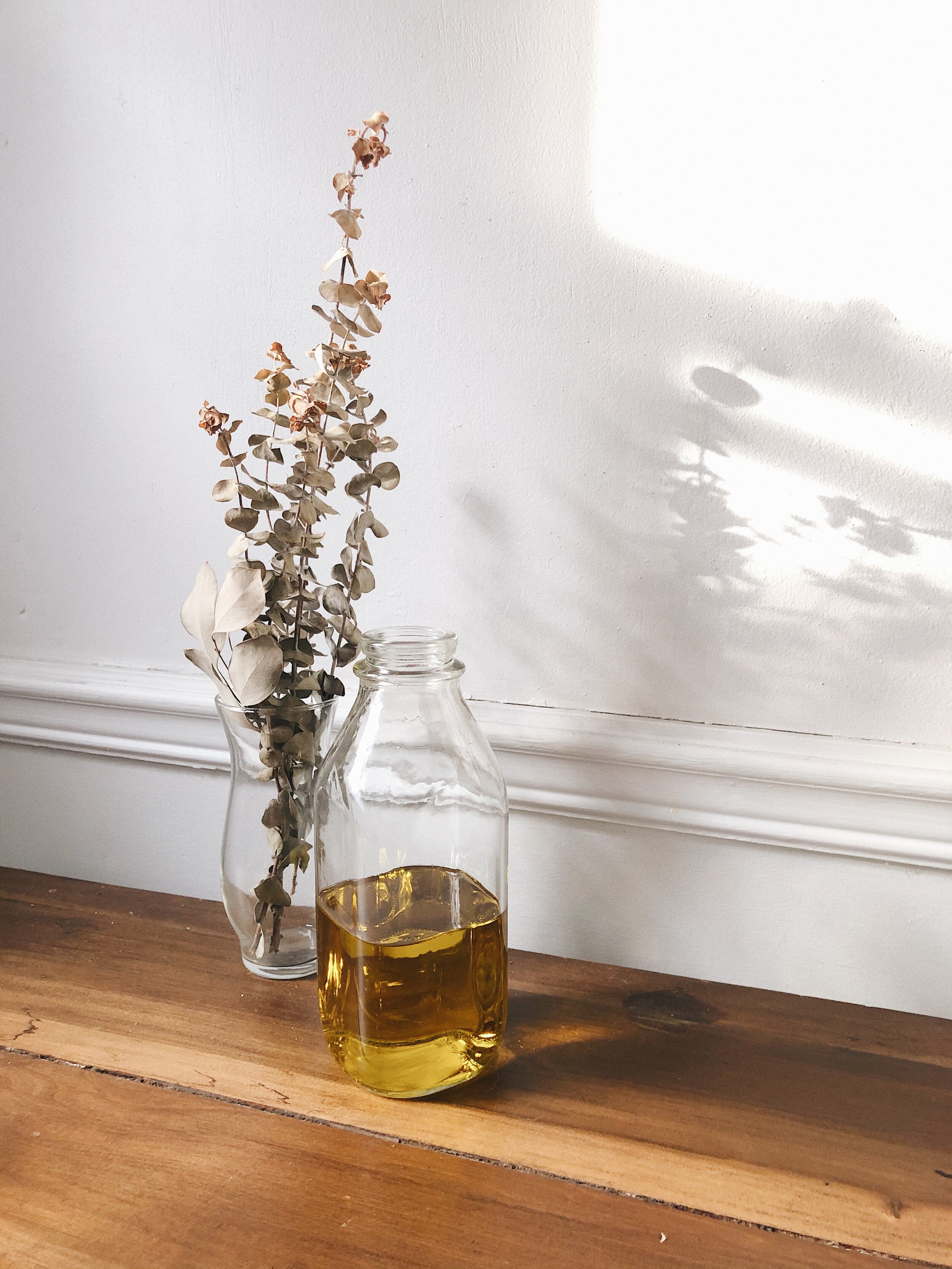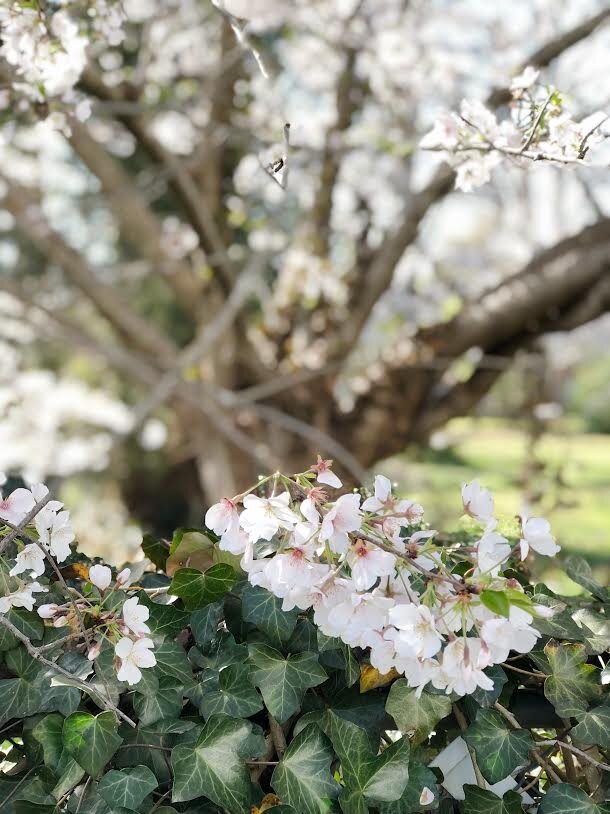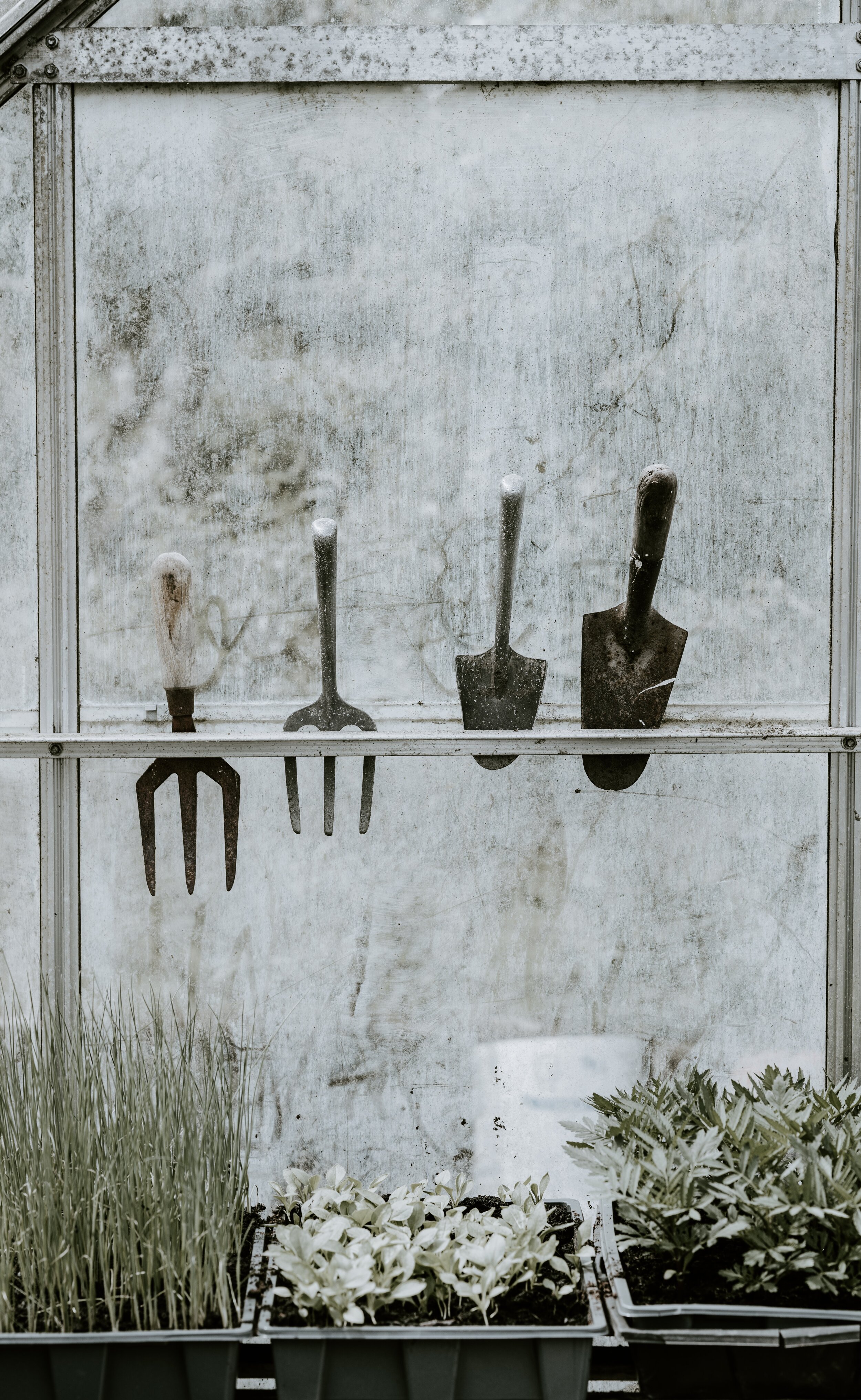
B L O G
How and When To Prune Your Shrubs
Pruning is an essential part of a plant’s life. Not only does it make your shrub look refreshed, but it also encourages healthy growth and sustainability for your plant to last year after year. And if you follow these steps on how and when to prune your shrubs, you’ll having your gorgeous shrubs lasting quite a long time.
Pruning is an essential part of a plant’s life. Not only does it make your shrub look refreshed, but it also encourages healthy growth and sustainability for your plant to last year after year. And if you follow these steps on how and when to prune your shrubs, you’ll having your gorgeous shrubs lasting quite a long time.
Why You Should Prune Your Shrubs
So why do it? Well, as plants grow, mature, and produce seeds/fruit/flowers, a little bit of maintenance and love is required from us. Pruning is the act of removing branches, leaves, and buds from a plant in order to make it more attractive, or to maintain its health.
Why take the extra time? Because your plant relies HEAVILY on it. Pruning removes any dead, dying, or diseased portion of the plant and helps to prevent spreading any disease throughout. Pruning also allows more light and air to pass throughout the plant, giving it more nutrients and allowing room for new growth.
Another common reason to prune would be what’s called “training” or “shaping”, which is when you want to shape a tree, hedge, or shrub. Training is accomplished by cutting branches to restrict growth. It also reduces the amount of branches, so an increase in energy and nutrients can go to all the other stems to produce more flowers/fruit.
When to Prune
It's important to remember to research your plant's specific needs, because no plant is the same as the other. However, here is a basic guideline that can assist you when there are no resources at hand:
Flowering Shrubs- prune immediately after blooming has ended
Non-Blooming Shrubs- prune late Winter or early Spring
Seasonal Pruning Guideline
Late winter is usually a time to prune fruit trees, non-flowering shrubs, trees, hedges, and berried shrubs/trees.
Spring is a time to prune any summer flower shrubs that have not bloomed yet.
Late spring pruning involves cutting back spring flowering shrubs that have already bloomed.
Summer is a great time to prune summer flowers after they have finished blooming.
Fall is a great time to prune roses, and also to remove any annuals that are finished with their season.
How to Prune
The two ways to prune your plant are by Heading + Thinning.
1. Heading
Heading is cutting off part of a branch in order to make the rest of the remaining branch stronger. It is used when new growth is wanted. If you are wanting new growth, you will want to cut the branch/stem just above the bud at an angle, remembering not to cut too close to the bud, but also not too far away. It may sound complicated, but we would be glad to show you how this achieved if you stop by one of our locations here in North Carolina.
2. Thinning
Thinning is cutting off a branch at its origin to prevent any new growth. This could include cutting to the main trunk or even to the ground. Often times a “thinning” technique is used when you are wanting to increase air flow and light to the plant. This helps to prevent diseases and boosts the bud and fruit production.
Pruning is an art that can seem complicated and difficult at first. But, once the basics are learned, it can become a freeing and therapeutic experience. And maybe we, as humans, can take a few principles from pruning, and apply them to our lives to make us stronger and healthier versions of ourselves. Because sometimes removing something, can actually be freeing at the end of it all.
Happy Pruning,
Your GVM Team
5 Ways To Attract Pollinators To Your Garden
The birds, the bees… and the butterflies: these are just a FEW of the many pollinators on this earth that serve such a secretly beneficial and beautiful purpose on this earth. But why do we need to make an effort to attract them to our gardens? Here are 5 ways to attract pollinators to your garden.
The birds, the bees...
and the butterflies: these are just a FEW of the many pollinators on this earth that serve such a secretly beneficial and beautiful purpose on this earth. But why do we need to make an effort to attract them to our gardens? Because pollinators are responsible for three-quarters of the world's food crops and many of the foods that we enjoy on a daily basis would not be existent without them. Because plants can not exist without the process of pollination. And plants are what's responsible for the air that we breathe and the food that we eat. So yes, pollinators are extremely important, because without them, our life as we currently know it, would not be.
Did you know…
+ that some bees travel up to 3 miles just to visit your flower garden?
+ that hummingbirds can visit up to 1000 flowers each day?
Crazy, right? And with all of this work that they do, they need our help, and there are some things that we can do to give them an extra boost to their day.
So here are five tips on how to attract
pollinators to your garden:
p l a n t a n a t i v e g a r d e n
A native garden is basically just a garden filled with plants that are naturally found growing in your region. For example, honeysuckle is a naturally occurring shrub/bush that grows here in North Carolina, so adding that to your garden this spring/summer would greatly benefit your pollinators!
Also, some bees are what's called "specialists", meaning that they can only feed their larvae the pollen from a specific native plant. So without these plants, the bee colony would not survive.
If you're wanting to attract more hummingbirds, aim for tubular and long shaped blooms with your flower choices, something like Daylillies or Petunias.
c h o o s e t h e c o l o r
Did you know that these hard working species are actually attracted to certain colors?
To attract bees… bees LOVE purple and blue flowers. Some great options, that we do carry at Garden Valley Market, would be Lavender, Petunias, and Verbena.
To attract Hummingbirds + Butterflies… we recommend colors of red, yellow, pink, and orange! Butterflies LOVE Lantana, and Hummingbirds love Petunias, Fuscia, and Lillies!
p r o v i d e w a t e r + r e s t
With how hard working these pollinators are, you better believe that they need a place to rest and refuel, and providing these places for them to do so is going to keep them coming back! They all need a place of still water to drink from. You can add some pebbles to a bird bath to make a great landing place for the insects so they won't drown.
a v o i d i n s e c t i c i d e s
Did you know that insecticides actually kill pollinators? KEEP So you might be TRYING to kill those pesky bugs eating your plant, but you're actually harming those beautiful butterflies and busy bees in the process. And insecticides are one of the reasons that the bee population has decreased to greatly!
So instead of going to insecticides first, try and google some natural alternatives and see if those work first. (There are also great organic options online that are safe for the environment, as well as pets and humans.)
k e e p t h e w e e d s
It’s early spring and we’re super excited to get our lawns looking fresh and green again… but maybe think twice about removing those dandelions and other weeds growing! Because these weeds are often the first flower that the pollinators source from when not many blooms have started yet! Instead, let them grow a tad bit longer until your garden starts coming along.
Let us know how you attract pollinators to your yard by commenting below!
We have MANY varieties of flowers for you to choose from at our stores, and a unique and beautiful selection of different shapes and colors. So come get your beautiful flowers grown just for your pollinators at home.
Thank you so much for joining us here. For more information on what Garden Valley Farmers Market is about, you can visit us here. If you’re wanting to visit with us, come by any of our five North Carolina locations. If you’re wanting to follow along with us, you can do so either on our Facebook, Youtube, or our Instagram. And if you’re wanting to check out our other recipes and blog posts, or are needing more inspiration, follow us on our Pinterest. We’d love to have you join us in our journey of planting better, eating better, and living better.
Much love,
Your Garden Valley Farmers Market Team
Herb Infused Olive Oil
Want a super easy DIY to satisfy your cravings until Spring comes? Well, we’ve got the perfect solution for you: Herb Infused Olive Oil. You’re welcome. This oil recipe makes the perfect gift, is super easy to make (but looks like it’s not), and will bring so much flavor to your next dinner.
Want a super easy DIY to satisfy your cravings until Spring comes? Well, we’ve got the perfect solution for you: Herb Infused Olive Oil. You’re welcome. This oil recipe makes the perfect gift, is super easy to make (but looks like it’s not), and will bring so much flavor to your next dinner.
IMPORTANT: you want to make sure that you choose a high quality olive oil, as this is the main ingredient. Second, you want to make sure that you’ve prepared for everything to be completely dry- bottles, utensils, herbs, etc. If not, mold can settle, and that’s no bueno for your recipe.
You can use any herbs for this recipe that you want, and can even mix them, but for this recipe we will be using Rosemary. If you are using fresh herbs from your garden or pots, remember to dehydrate them before beginning. See below on how to do that. If you don’t have access to fresh herbs, you can always buy dried herbs from the store. But remember that we open up soon, and will have ALL the fresh smelling herbs ready for you!
Dehydrating your herbs:
Cut your herbs to the size you want them in the bottle
Wash any dirt off, then dry them with a paper towel
Line a baking sheet with parchment paper and place your sprigs on it
Set oven on lowest temperature and “cook” for about 1 ½ to 2 hours
How to Make Rosemary Infused Olive Oil
Add about 2 cups of your olive oil together with about 3 to 5 sprigs of Rosemary into your pot. Then heat over a medium temperature for about 5 minutes. Remove from heat and let your oil cool. Once your oil has cooled down, you can strain and store in a jar that allows you to close the lid tightly. You can even add a few sprigs of Rosemary to your jar for a pretty aesthetic. This oil will last for about 3 months and needs to be stored in the refrigerator, but with how easy it is to make, you’re probably going to be making more very soon anyways.
Rosemary Infused Olive Oil
Total time: 10 minutes
INGREDIENTS
2 Cups Olive Oil
5 Rosemary Sprigs
DIRECTIONS
1. Combine your oil and Rosemary sprigs into a pot
2. Heat over medium heat for about 5 minutes
3. Remove from heat and let cool
4. Strain oil into a jar with a tightly closed lid
5. Store in refrigerator for up to 3 months
Rosemary is a great herb that lasts all year long in central NC, so don’t forget to pick up one for yourself when we open, which will be VERY soon.
Thank you so much for joining us here. For more information on what Garden Valley Farmers Market is about, you can visit us here. If you’re wanting to visit with us, come by any of our five North Carolina locations. If you’re wanting to follow along with us, you can do so either on our Facebook, Youtube, or our Instagram. And if you’re wanting to check out our other recipes and blog posts, or are needing more inspiration, follow us on our Pinterest. We’d love to have you join us in our journey of planting better, eating better, and living better.
Much love,
Your Garden Valley Farmers Market Team
5 Steps To Preparing Your Garden For Spring
With Spring fast approaching, we’re wanting to set you up for success this planting season. And when our mom’s taught us to be prepared, we took it to heart. That’s why we’re passing along these 5 steps for you before you start planting your flowers and vegetables this year.
With Spring fast approaching, we’re wanting to set you up for success this planting season. We desire to start fresh every year, and we want you to join that journey with us too. That’s why we’re passing along these 5 steps for you before you start planting your flowers and vegetables this year.
5 Steps To Preparing Your Garden For Spring
Clean up. Winter can bring a lot of harsh elements to your land. Broken off branches, leaves left over from the fall, and whatever the winds and animals may have tracked in. Now is the time to inspect your garden and clean up whatever winter may have brought.
Check garden tools. Carefully inspect your tools and see what needs to be tossed or cleaned. Clean your tools with some warm water and soap and start fresh this spring. Also check to see if something is damaged. Toss it if it’s irreparable, because there’s nothing more annoying than when you’re getting ready to work in your garden but can’t because the tools are broken.
Check barriers. Inspect your fencing, trellises, tomato cages, and any other barriers you will be using in or around your garden. Check for rotting wood, damage, or any other imperfections that might hinder your gardening this year.
Photo by Annie Spratt on Unsplash
4. Care for your soil. Before you’re planning to plant, you might want to till your soil, apply a layer of compost, and rake in with the soil. Healthy soil equals healthy plants, so making sure to pay special attention to this step will set you and your crop up for success this year.
5. Zone Check. Give yourself a refresher of which zone you are located, and plan your plants out according to that. There’s nothing more discouraging than knowing that your plant won’t survive due to the weather conditions that you have no control over.
With these tips, we hope that you’ll be as excited as we are about this new season. And we hope that you’ll visit us to pick out all of your gorgeous flowers and healthy vegetables this spring.
Thank you so much for joining us here. For more information on what Garden Valley Farmers Market is about, you can visit us here. If you’re wanting to visit with us, come by any of our five North Carolina locations. If you’re wanting to follow along with us, you can do so either on our Facebook, Youtube, or our Instagram. And if you’re wanting to check out our other recipes and blog posts, or are needing more inspiration, follow us on our Pinterest. We’d love to have you join us in our journey of planting better, eating better, and living better.
Much love,
Your Garden Valley Farmers Market Team






























